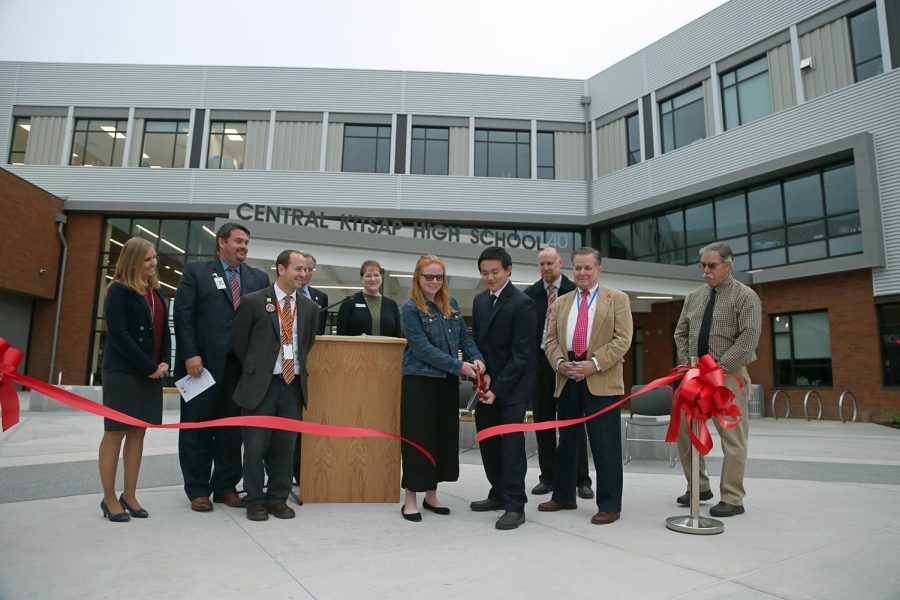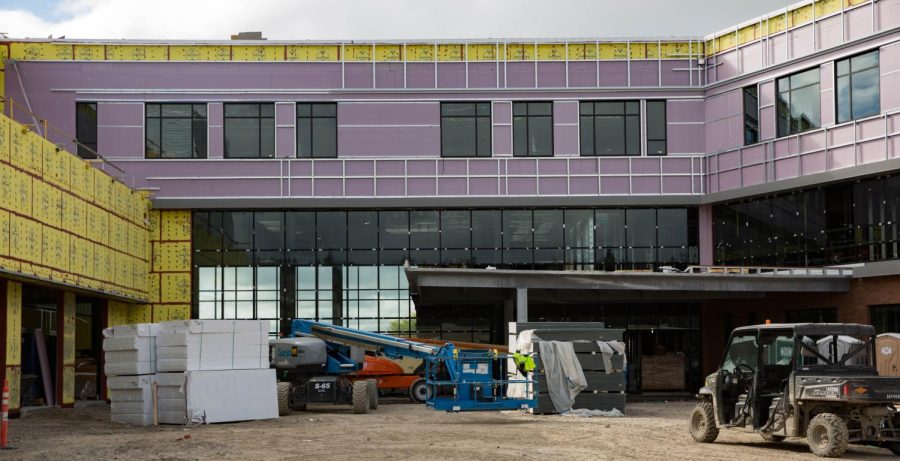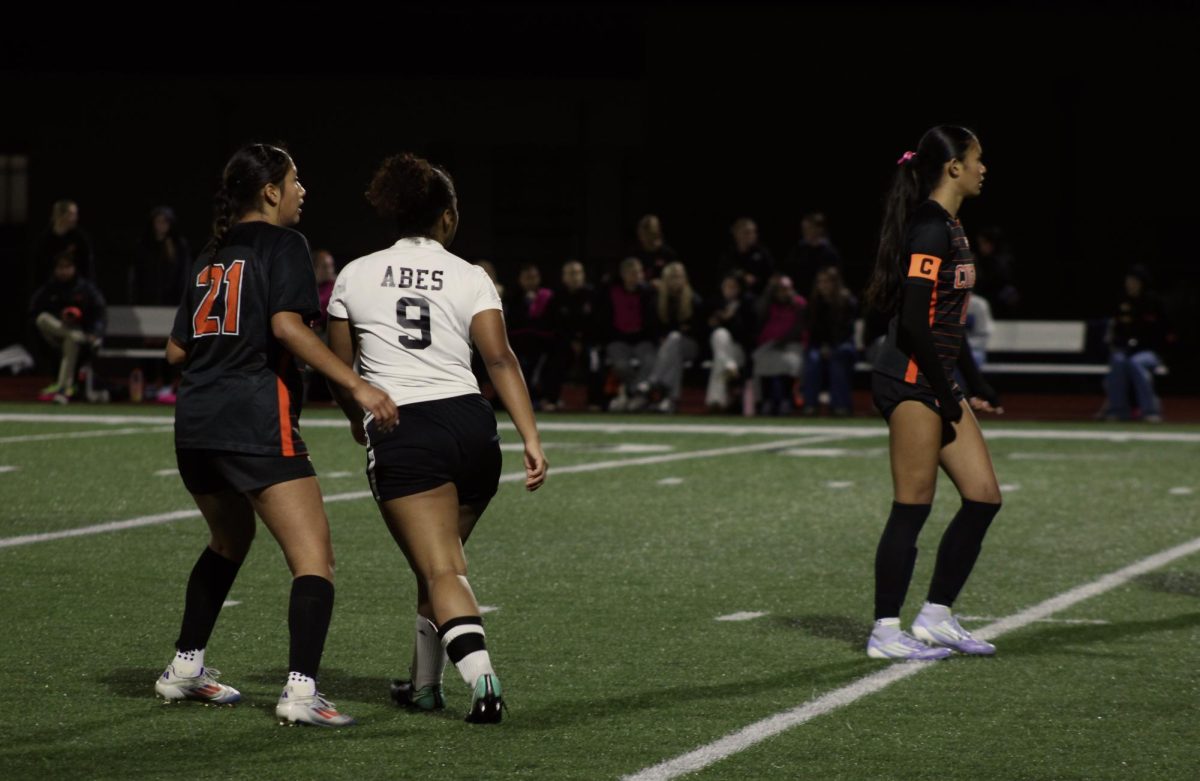Sustainability in the New Central Kitsap Schools
The rebuilding of Central Kitsap Middle and Central Kitsap High School and how sustainability was taken into account.
Official ribbon cutting ceremony celebrating the completion of the new school.
The original Central Kitsap High School was built in 1942, with its fellow Central Kitsap Middle School being constructed in 1959.
However, on Feb. 22, 2016, ground was once again broken as the erection of the new CK Middle and School commenced, with newfound goals of sustainability in mind. Construction was finished in June of 2019, just before the start of a new school year.
Though there were numerous times the construction team would try to remodel or refurbish the buildings because of various internal issues within the old schools, the problems would eventually come back shortly thereafter.
This led to many people, including Craig Johnson, principal of CKHS, making the decision to pursue giving the school a newfound upgrade and much-needed developments.
“…There were some of the internal systems that weren’t working anymore,” Johnson said. “For example, I think the plumbing system began to fail. It was insufficient for some of the electrical and data systems. The heating and cooling no longer became effective.”
Bill Wilson, a current AP Environmental Science and Chemistry teacher at CKHS, also added his experience within the old building, describing when he realized the alarming issue of the old school’s waste water running off into a nearby stream that directly impacted the local salmon population.
“So the old building, all the water that ran off the roof, parking lots, sidewalks, went directly into the local salmon stream next to the school,” Wilson said. “…There’s motor oil, tire dust, all sorts of stuff in that runoff. Tire dust and motor oil are both toxic to salmon.”
The announcement of the construction of a new school excited those like Wilson who wanted a change as soon as possible.
“Just to be out of the old one excited me,” Wilson said. “Although a lot of people have fond memories about the old school, I just thought it was nasty.”
The construction of the new buildings was bond-funded, meaning that it was a project that was invested into by Kitsap voters and the local community itself.
The construction team had worked together with the design team and general contractors from Integris Architects and Skanska Scouts.
The construction process was acquisitioned into numerous packaged bids, with each one pertaining to certain parts of the design.
“The design team puts together various packages that make up the parts of the building.” Doug Newell, the assistant superintendent for finance and support for the CK district, said “…So there might be up to 20 or 25 different components that make up the entire building.”
Some various packages include plumbing, electrical, heating, air conditioning, and foundational building.
A $77.9 million construction contract was signed for a new combined campus, with the new schools having been created to hold about 2,100 students in total, 750 in the middle school and 1,400 in the high school, with plentiful amounts of space, allowing students to have more educational opportunities.
The decision for CKMS and CKHS to become a joint campus was determined on a variety of factors including cost efficiency, exposure, and flexibility. They combined certain internal systems into one such as a kitchen, plumbing, electrical, heating, and water system in order to be financially well organized.
“That’s how they saved some of the money for the efficiencies,” Johnson said. “…The district saved resources to spend elsewhere.”
The school’s combined construction system created the ability to use the money for other concepts that weren’t planned for at the beginning of the design process, such as turf on the football field and a stadium covering.
“It’s most evident back in the CTE [Career and Technical Education] building, computer maintenance, and our aviation lab,” Newell said. “We’re able to have these kinds of spaces because those schools are co-located. We might not have been able to invest in that kind of stuff if it was just the middle school.”
Although the school had remaining funds available to pursue the usage of solar energy, the idea was not consistently advocated for.
“[It] never got followed through and I was disappointed at that,” Wilson said. “So I hope in the future, at some point, maybe some of our electricity in this building can come from solar panels.”
The CTE building has a flat roof that is designed and wired to have solar panels affixed to it. It is ideal to have a flat roof when implementing solar panels because it provides ample space.
Despite the lack of solar energy, the new CK buildings have improved the issue of unsustainable energy usages and absent runoff management.
Johnson stated that there is improved energy usage due to implementation of varying outlets and LED motion lights.
There are two outlets implemented around the school; one green and one white, with green outlets only being available for use during certain hours of the day, mainly school hours, while white outlets are always available for use.
Previously, the overhead LED lights were fluorescent. With the construction of the new building, the lights now turn on and off depending on whether there is or isn’t a person in the room and whether there is natural light coming into the room.
“There are some sensitivities within the system where we need to use a lot less electricity to run lights,” Johnson said. “It knows there’s a lot of sunlight coming into the room and it takes advantage of the most natural light.”
Additionally, the runoff from the new buildings are now being caught by catch basins in four stormwater ponds. The fist pond is located at the existing middle school gym parking lot and the second is at the Alternative Highschool site. The other two are located at the Science Kit building and the high school staff parking lot.
Regarding the aesthetics of the new building, Johnson claims it to have a “homey” feel to it.
But the same couldn’t be said from Riliegh Maleport, a former student at the old CK Highschool and a current student at the new CK Highschool. Although she enjoys some new features, such as the filtered water, there’s still a missing component occurring to Maleport.
“I like the new building, I like the layout better,” Maleport said. “…But I do feel that the old schools’ [were] more homey and the new [school] feels industrial.”
Despite the debate on the atmosphere of the new building, both the Central Kitsap Middle School and High School have gone through undoubtedly long journeys to get where they are today.
“I hope to come back and see it looking just about like this today,” Newell said. “It’s a fantastic building and we are very thankful to the community for investing a lot of money to build a new campus.”




